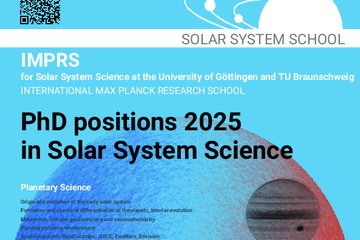All genres
261.
Conference Paper
A three-dimensional model of the nucleus of Comet Halley. In: ESA Proceedings of the 20th ESLAB Symposium on the Exploration of Halley's Comet, pp. 367 - 369 (Eds. Battrick, B.; Rolfe, E. J.; Reinhard, R.). ESA Publ. Div., Noordwijk (1986)
262.
Talk
Quantitative Spectroscopy of the Solar Atmosphere. Dynamic Sun: I. MHD Waves and Confined Transients in the Magnetised Atmosphere, Varanasi, India (2016)
263.
Talk
Bhola N. Dwivedi - 25 Years of Cooperation with SUMER. Dynamic Sun: I. MHD Waves and Confined Transients in the Magnetised Atmosphere, Varanasi, India (2016)
264.
Poster
Multi-line Spectroscopic Analyses of the Dynamical Cool Loops Using Interface Region Imaging Spectrometer (IRIS) Observations. IAU Symposia 340: Long-term datasets for the understanding of solar and stellar magnetic cycles, Jaipur, India (2018)
265.
Report
Sun hydrogen Lyman irradiance lines profiles (Lemaire+, 2015). VizieR Service (2015)
266.
Report
Observations of the Sun at vacuumu-ultravioletwavelengths form space. Part II: Results and interpretations. Max-Planck-Institut für Sonnensystemforschung, Katlenburg-Lindau, Germany (2007)
267.
Report
Niederenergetisches Teilchenexperiment (AL 1) in der Nutzlast 'Polare Hochatmoshpäre'. Max-Planck-Institut für Sonnensystemforschung, Katlenburg-Lindau, Germany (1976)
268.
Report
Suprathermal electron experiment (KL 7) Experiment no. 8a on the porcupine payload. Max-Planck-Institut für Sonnensystemforschung, Katlenburg-Lindau, Germany (1976)
269.
Report
Suprathermal electron experiment (KL 7) Experiment no. 8a on the porcupine payload. Max-Planck-Institut für Sonnensystemforschung, Katlenburg-Lindau, Germany (1976)











